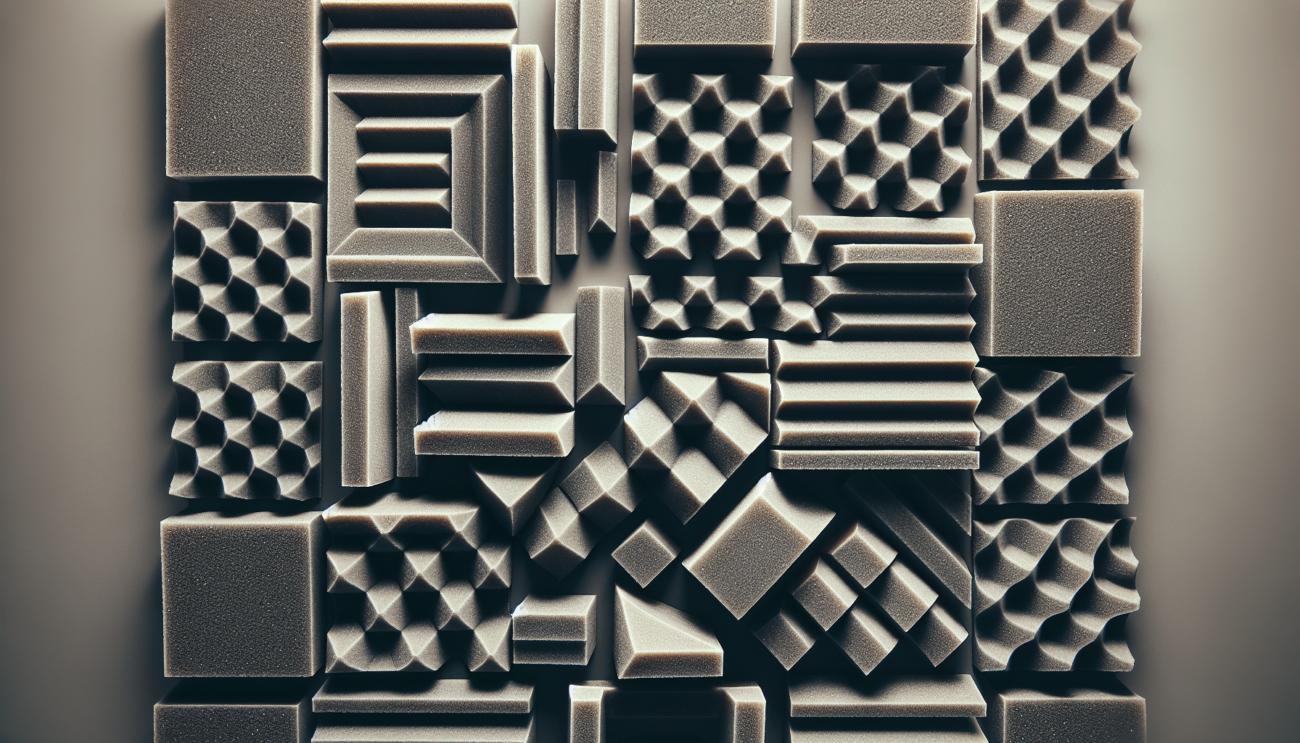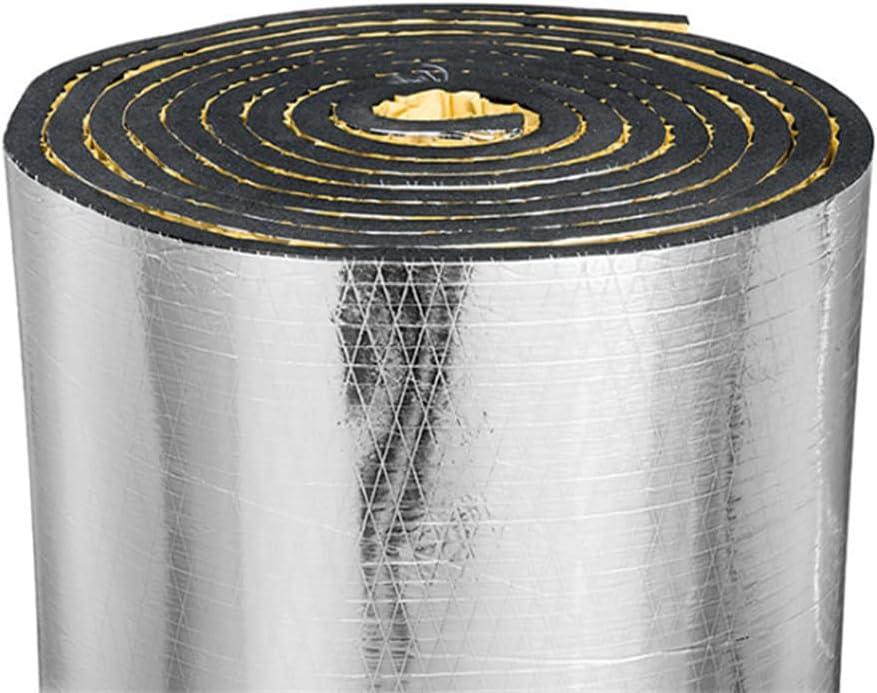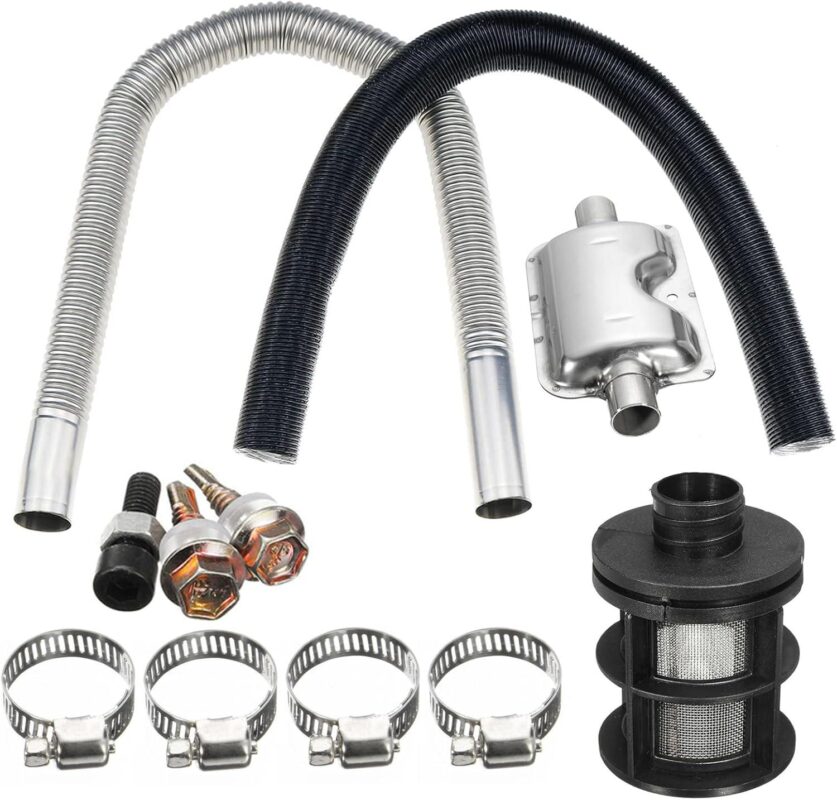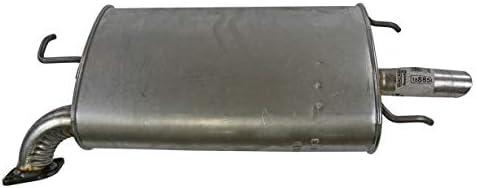Welcome to your ultimate guide on achieving superior sound insulation! In this article, you’ll discover how selecting the right accessories can make a significant difference in creating a quieter, more peaceful environment. Dive into expert tips on using items like acoustic panels, door sweeps, and heavy curtains to block out unwanted noise effectively. With the right accessories, you’ll soon enjoy soundproofing solutions that are both practical and stylish, turning any space into a perfect sanctuary of tranquility. Have you ever been annoyed by the constant noise from outside your home or office space? Whether it’s the sounds of traffic, loud neighbors, or even airplanes flying overhead, noise pollution can significantly impact your comfort and peace of mind. Achieving better sound insulation is not just about blocking out unwanted noise; it’s also about creating a more serene and enjoyable environment. Thankfully, with the right accessories, you can improve your space’s sound insulation effectively.
Understanding Sound Insulation
Before diving into the various accessories that can help you achieve better sound insulation, it’s crucial to understand what sound insulation is and why it matters.
What is Sound Insulation?
Sound insulation is the process of reducing the amount of sound that passes through walls, floors, ceilings, and other barriers. It aims to keep external noises out and minimize the transfer of noise between rooms within a building.
Why is Sound Insulation Important?
A well-insulated space can significantly enhance your quality of life. It helps:
- Reduce stress and enhance mental well-being by providing a quieter environment.
- Improve privacy by preventing sounds from traveling from one room to another.
- Boost productivity, particularly if you work from home or in an office setting.
- Increase property value by adding a desirable feature to your home.
Key Factors Affecting Sound Insulation
To achieve optimal sound insulation, it’s essential to consider various factors that can impact its effectiveness.
Material Density
Denser materials tend to block sound more effectively. For example, concrete walls provide better sound insulation compared to drywall.
Thickness of Barriers
The thicker the barrier, the better the sound insulation. This is because thicker barriers can absorb more sound waves, reducing their transmission.
Surface Sealing
Gaps and cracks in walls, floors, and ceilings can allow sound to pass through. Proper sealing of these surfaces is crucial for effective sound insulation.
By keeping these factors in mind, you can make more informed decisions when selecting accessories for sound insulation.

Must-Have Accessories for Better Sound Insulation
Now that you have a basic understanding of sound insulation, let’s explore the right accessories that can help you achieve it.
1. Acoustic Panels
Acoustic panels are designed to absorb sound waves, reducing echo and reverberation within a space. They are often made from materials like foam, fabric, or fiberglass.
Benefits of Acoustic Panels
- Enhanced Acoustic Quality: They improve the overall sound quality in a room by reducing unwanted reflections.
- Versatility: Available in various sizes, colors, and designs to match your decor.
- Easy Installation: Most panels can be easily mounted on walls or ceilings.
2. Soundproof Curtains
Soundproof curtains are heavy drapes made from dense materials that help block external noise. They often come with multiple layers of fabric for added insulation.
Why Choose Soundproof Curtains?
- Ease of Use: Simply hang them up like regular curtains.
- Aesthetic Appeal: Available in various colors and designs.
- Dual Functionality: They also provide thermal insulation, keeping your space warm in winter and cool in summer.
3. Door Sweeps and Seals
Gaps under doors can let a significant amount of noise seep through. Door sweeps and seals are designed to close these gaps and prevent sound leakage.
Advantages of Door Sweeps and Seals
- Cost-Effective: An affordable way to improve sound insulation.
- Simple Installation: Easy to attach to your existing doors.
- Energy Efficiency: Often provide additional benefits like reducing drafts and improving temperature control.
4. Soundproof Windows
Windows are common weak points for sound insulation. Soundproof windows are designed with multiple layers of glass and air gaps to minimize noise.
Benefits of Soundproof Windows
- Significant Noise Reduction: Effective at blocking external sounds.
- Energy Savings: Improved insulation can lower your energy bills.
- Durability: Made to last, often with warranties.
5. Carpets and Rugs
Hard surfaces can amplify noise as sound waves bounce off them. Carpets and rugs can help absorb sound, making your space quieter.
Why Use Carpets and Rugs?
- Aesthetic Variety: Available in numerous colors, patterns, and textures.
- Comfort: Adds a layer of cushioning underfoot.
- Easy Updates: Simple to replace or move as needed.
6. Acoustic Underlay
Used under flooring, acoustic underlay adds a layer of sound insulation to floors. It is particularly useful in multi-story buildings to reduce noise transmission between levels.
Benefits of Acoustic Underlay
- Effective Sound Barrier: Reduces both airborne and impact noise.
- Longevity: Extends the life of your flooring.
- Versatility: Suitable for use under various types of flooring, including carpet, hardwood, and laminate.
7. Soundproofing Foam
Soundproofing foam is ideal for treating smaller areas where you need targeted noise reduction. It is often used in recording studios, home theaters, and workspaces.
Why Choose Soundproofing Foam?
- Highly Effective: Designed to absorb and dissipate sound waves.
- Customizable: Can be cut to fit specific spaces and shapes.
- Lightweight: Easy to install and move as required.
Installation Tips for Sound Insulation Accessories
Understanding how to install these accessories correctly can make a significant difference in their effectiveness. Here are some tips to help you get started:
Acoustic Panels Installation
- Determine Placement: Identify the most reflective surfaces in your room, such as bare walls and ceilings.
- Mounting Method: Choose either adhesive strips or wall brackets based on the panel weight and wall type.
- Even Distribution: Ensure panels are evenly distributed to cover maximum reflective areas.
Soundproof Curtains Installation
- Measure Your Windows: Make sure to get curtains that extend beyond the window frame.
- Heavy-Duty Rods: Use sturdy curtain rods to support the weight of the curtains.
- Full Coverage: Ensure the curtains fully cover the window for optimal sound insulation.
Door Sweeps and Seals Installation
- Clean the Surface: Ensure the bottom of the door is clean before applying the sweep.
- Proper Alignment: Attach the sweep or seal so it fits snugly against the floor.
- Check for Gaps: Test for any remaining gaps and adjust as necessary.
Soundproof Windows Installation
- Professional Help: Consider hiring professionals for installation due to the complexity involved.
- Weather Stripping: Enhance the effectiveness by adding weather stripping around the frames.
- Double Checking: Verify that all seals are intact and functioning correctly.
Carpets and Rugs Placement
- High-Traffic Areas: Place rugs in hallways and rooms with the most foot traffic.
- Padding: Use carpet padding underneath for additional sound absorption.
- Regular Maintenance: Keep them clean and in good condition for sustained efficacy.
Acoustic Underlay Installation
- Prepare the Subfloor: Ensure the subfloor is clean, dry, and free from debris.
- Cut to Size: Trim the underlay to fit the room dimensions accurately.
- Seamless Fit: Lay the underlay in a way that avoids gaps and overlaps.
Soundproofing Foam Installation
- Identify Problem Areas: Focus on corners, edges, and other reflective points in the room.
- Adhesive Application: Use strong adhesive or mounting brackets for secure attachment.
- Layering: Consider multiple layers for areas with significant noise issues.

Maintenance Tips for Long-Lasting Sound Insulation
Once you’ve installed your sound insulation accessories, proper maintenance is essential to ensure their longevity and effectiveness. Here are some tips to keep in mind:
Regular Cleaning
Dust and debris can affect the performance of sound insulation accessories. Regularly clean acoustic panels, curtains, and carpets to maintain their efficiency.
Inspect Seals and Sweeps
Check door sweeps and window seals periodically for wear and tear. Replace them if they show signs of damage to prevent noise leakage.
Professional Checks
For components like soundproof windows and specialized acoustic installations, consider periodic professional inspections to ensure everything is functioning optimally.
Repositioning
Over time, you might find that moving certain accessories to different locations improves their effectiveness. Don’t hesitate to make adjustments as needed.
Budget Considerations
Improving sound insulation doesn’t have to break the bank. Here are some budget-friendly options and considerations to help you achieve your goals without overspending:
DIY Options
For those who enjoy DIY projects, many sound insulation accessories can be installed without professional help. Acoustic panels, door sweeps, and soundproof curtains are great starting points.
Prioritize Key Areas
Focus on insulating the noisiest areas of your space first. Bedrooms, living rooms, and home offices often benefit the most from improved sound insulation.
Look for Discounts
Shop around for deals, discounts, and second-hand options. Many retailers offer seasonal sales or clearance items that can save you money.
Bulk Purchases
Buying in bulk can sometimes offer significant savings. If you have multiple rooms to insulate, consider purchasing materials in larger quantities.
Common Myths About Sound Insulation
When it comes to sound insulation, several misconceptions can lead you astray. Let’s debunk some common myths:
Myth 1: Thick Walls are Enough
While thick walls can help, they aren’t the only solution. Effective sound insulation often requires a combination of materials and techniques.
Myth 2: Soundproofing is Expensive
While some high-end options can be costly, there are plenty of affordable accessories that can make a significant difference.
Myth 3: All Carpets are Equal
Not all carpets offer the same level of sound insulation. Thicker, denser carpets with quality padding provide better sound absorption.
Myth 4: Acoustic Panels Only Work in Studios
Acoustic panels can be beneficial in any setting, not just professional studios. They help improve sound quality and reduce noise in homes and offices too.
Benefits of Improved Sound Insulation
Once you’ve achieved better sound insulation, the benefits you’ll experience are numerous and impactful:
Enhanced Comfort
A quieter environment is inherently more comfortable. Whether you’re working, relaxing, or sleeping, reduced noise levels contribute to a more pleasant atmosphere.
Improved Focus and Productivity
In workspaces, better sound insulation can lead to enhanced focus and productivity. Fewer distractions make it easier to concentrate on tasks at hand.
Increased Property Value
Sound insulation is a notable feature for potential buyers. It adds value to your property by offering an enhanced living experience.
Better Health and Well-being
Excessive noise exposure has been linked to various health issues, including stress and high blood pressure. By reducing noise, you’re also contributing to better health and well-being.
Greater Privacy
Whether in a home or office, better sound insulation ensures that conversations and activities remain private. It prevents sound from traveling between rooms, enhancing your overall privacy.
Case Studies: Real-Life Examples of Effective Sound Insulation
To give you a better understanding of how sound insulation accessories can make a difference, here are some real-life examples:
Urban Apartment Living
John and Sarah lived in a bustling city center. Their apartment faced a busy street, making it difficult to relax. After installing soundproof windows, acoustic panels, and thick curtains, they noticed a significant reduction in street noise. Their home became a sanctuary of peace amidst the urban chaos.
Home Office Transformation
Emily worked from home and struggled with noise from neighboring apartments. She installed acoustic panels on the walls and ceiling of her home office. Combined with a soundproof door sweep, the changes drastically improved her focus and productivity. She was thrilled with her transformed work environment.
Renovated Basement Studio
Mike decided to turn his basement into a home theater. To create the perfect acoustic environment, he used soundproofing foam, carpets, and acoustic underlay. The result was phenomenal. His basement studio offered movie-theater-quality sound without disturbing the rest of the house.
Choosing the Right Accessories for Your Space
Selecting the right sound insulation accessories depends on several factors, including the type of noise you’re dealing with, the specific areas in need of insulation, and your budget. Here’s a quick guide to help you choose the most suitable options:
| Area/Need | Suggested Accessories |
|---|---|
| Windows | Soundproof windows, soundproof curtains |
| Walls | Acoustic panels, soundproofing foam |
| Doors | Door sweeps and seals |
| Floors | Carpets and rugs, acoustic underlay |
| Ceilings | Acoustic panels, soundproofing foam |
| Specific Workspaces | Acoustic panels, soundproofing foam, door sweeps |
| Whole House | Combination of windows, doors, floors, and wall solutions |
Each space is unique, so take the time to assess your specific needs and challenges before making your final selection.
Final Thoughts
Achieving better sound insulation with the right accessories is a practical and rewarding endeavor. It not only enhances your living or working environment but also contributes to your overall well-being. By understanding the key factors that affect sound insulation, selecting the appropriate accessories, and following the installation and maintenance tips provided, you’ll be well on your way to enjoying a quieter and more comfortable space.
Remember, sound insulation is an investment in your quality of life. Whether you’re creating a peaceful home, a productive office, or a high-quality entertainment space, the right accessories can make all the difference. So go ahead, take the steps to improve your sound insulation today, and relish in the tranquility that’s just within reach.

















